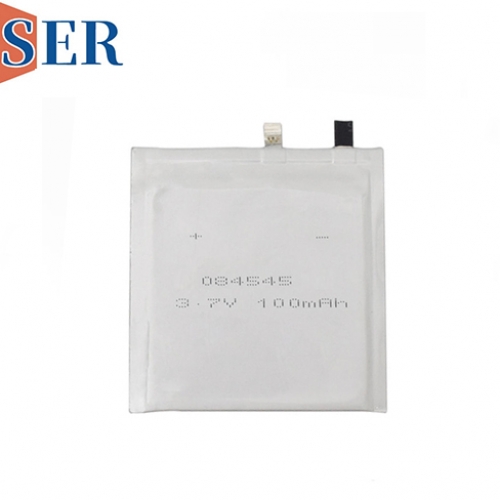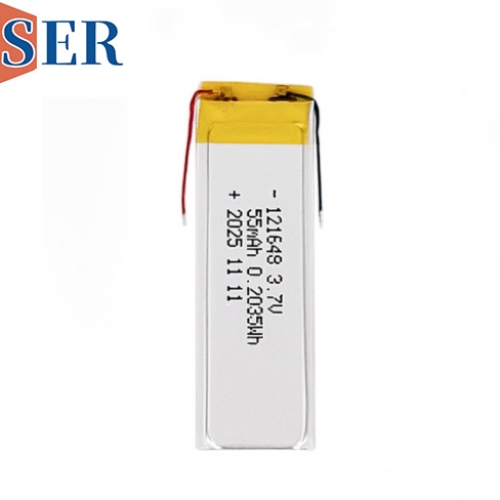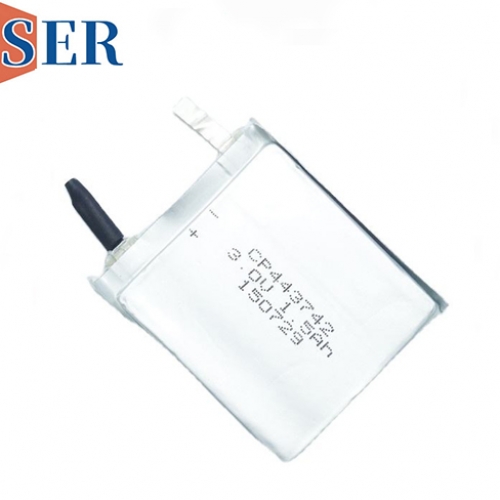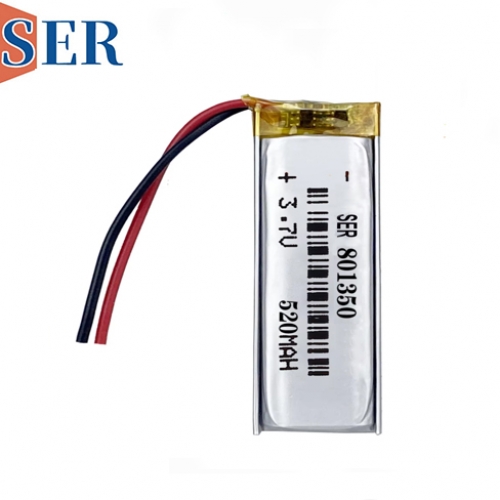Ultra-Thin Limno₂ Battery CP084545: Revolutionizing Power Solutions for GPS Trackers and Card-Type Devices
Ultra-Thin Limno₂ Battery CP084545: Revolutionizing Power Solutions for GPS Trackers and Card-Type Devices
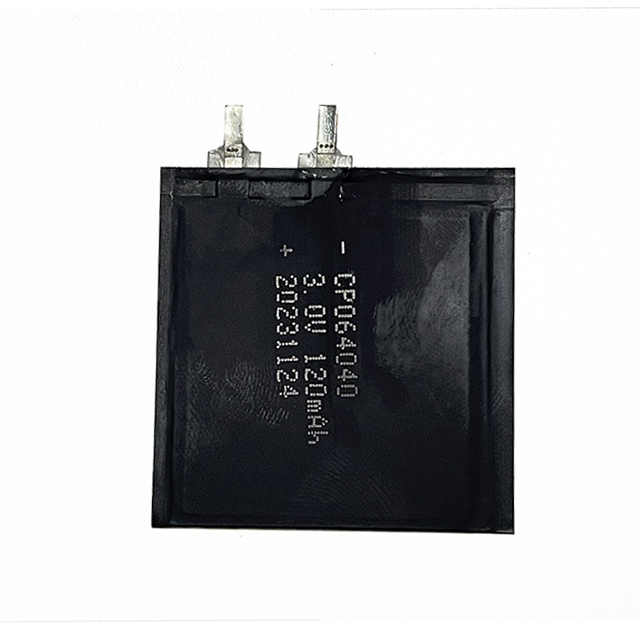
Introduction
In the era of rapid technological advancement, compact and efficient power solutions are critical for enabling next-generation IoT devices, GPS trackers, and wearable technology. Among the innovations driving this evolution is the ultra-thin lithium manganese dioxide (Li-MnO₂) battery, exemplified by the CP084545 model. Designed to meet the stringent demands of miniaturization and long-lasting performance, this battery represents a breakthrough in primary cell technology. This article delves into the technical specifications, applications, advantages, and market implications of the CP084545 ultra thin Li-MnO₂ battery, highlighting its role in powering GPS trackers and card-type devices.
1. Technical Specifications and Design Features
The ultra-thin CP084545 Li-MnO₂ battery is engineered to deliver reliable power in ultra-compact form factors. Key specifications include:
Nominal Voltage: 3.0V (typical for Li-MnO₂ chemistry).
Capacity: 100mAh, optimized for low-power IoT devices.
Dimensions: 0.8mm thickness × 45mm width × 45mm length, making it ideal for thin, card-shaped devices.
Weight: Approximately 5g (estimated based on lithium polymer density).
Operating Temperature Range: -20°C to 60°C, ensuring performance in harsh environments.
Certifications: Compliant with CE, 3C, and UL1642 safety standards for global market access.
Chemical and Structural Advantages
The ultra-thin battery leverages lithium manganese dioxide (Li-MnO₂) chemistry, a primary cell type known for high energy density, low self-discharge, and stability. Unlike rechargeable lithium-ion (Li-ion) batteries, Li-MnO₂ cells are non-rechargeable but offer distinct advantages for specific applications:
Safety: No risk of thermal runaway, overcharging, or short-circuiting due to their non-rechargeable design.
Stability: Excellent shelf life (up to 10 years at 25°C) and resistance to leakage.
Environmental Compliance: RoHS-compliant, free from toxic metals like cadmium or mercury.
Design Innovations
The CP084545 achieves its ultra-thin profile through advanced lithium polymer technology, which eliminates the need for rigid metal casings. This flexible, laminated construction enables seamless integration into credit card-sized devices and GPS trackers with tight internal spaces.
2. Applications in GPS Trackers and Card-Type Devices
The CP084545 battery is tailored for applications where size, weight, and longevity are paramount.
GPS Trackers
Miniaturized Design: The 0.8mm thickness allows GPS modules to be embedded in wearables, pet collars, or asset tags without compromising user comfort or device aesthetics.
Extended Operational Life: At 100mAh, the battery can power a low-power GPS tracker (consuming ~5mA in sleep mode) for up to 20 days, depending on transmission frequency.
Environmental Resilience: The wide temperature range ensures consistent performance in outdoor applications, from cold storage chains to desert logistics.
Card-Type Devices
Smart Cards and RFID Tags: The ultra-thin battery enables active RFID tags with enhanced transmission ranges and data logging capabilities, ideal for inventory management or access control.
Medical Wearables: In devices like health monitors or temperature patches, the CP084545 provides a thin, flexible power source that conforms to the body.
Case Study: GPS Tracking for Logistics
A fleet management company deployed GPS trackers powered by CP084545 batteries in cargo containers. The ultra-thin design allowed seamless integration into container seals, while the battery’s 10-year shelf life reduced pre-deployment maintenance. Results showed a 30% reduction in device footprint and a 25% improvement in transmission reliability under extreme temperatures.
3. Performance Benchmarks and Advantages
Comparison with Alternative Batteries
Rechargeable | No | Yes | No |
Energy Density | 250Wh/L | 600–700Wh/L | 100–150Wh/L |
Cycle Life | N/A (primary cell) | 300–1,000 cycles | N/A |
Self-Discharge | <1%/year | 1–2%/month | 5–10%/year |
Cost | Low (primary cell) | High (initial cost) | Low |
Safety | High | Moderate (requires protection) | High |
Key Advantages of CP084545
Ultra-Thin Profile: Enables integration into devices where thickness is critical (e.g., smart cards, flexible wearables).
Lightweight: Lithium polymer construction reduces weight by up to 40% compared to alkaline batteries.
Low Self-Discharge: Ideal for devices requiring long-term standby, such as emergency beacons or asset trackers.
Wide Temperature Tolerance: Outperforms Li-ion batteries in low temperatures (<0°C), critical for outdoor GPS applications.
4. Environmental and Safety Considerations
Environmental Impact
Recycling: Li-MnO₂ batteries are easier to recycle than Li-ion cells due to the absence of volatile electrolytes.
Carbon Footprint: Lower energy consumption during manufacturing compared to rechargeable batteries.
Safety Features
Overcharge Protection: Inherent to primary cells, eliminating the need for complex battery management systems.
Leakage Prevention: Polymer electrolyte reduces the risk of leakage, even under mechanical stress.
5. Market Trends and Future Outlook
Growth Drivers
IoT Expansion: The proliferation of connected devices in logistics, healthcare, and smart cities demands compact, efficient power solutions.
Sustainability: Regulatory pressures to reduce electronic waste favor primary cells in disposable IoT sensors.
Future Innovations
Higher Energy Density: Advances in nanostructured Li-MnO₂ cathodes could boost capacity to 150mAh while maintaining thin form factors.
Flexible Batteries: Integration with printed electronics for fully flexible, card-shaped devices.
Competitive Landscape
Major players like Panasonic, Toshiba, and Varta are investing in thin-film Li-MnO₂ batteries. The CP084545 differentiates itself through cost-effectiveness and a focus on extreme-temperature applications.
6. Conclusion
The CP084545 ultra-thin Li-MnO₂ battery represents a paradigm shift in power solutions for space-constrained devices. By combining a 0.8mm profile, robust performance, and environmental safety, it addresses critical gaps in GPS tracking and IoT applications. As the demand for miniaturized, long-lasting devices grows, this battery is poised to become a cornerstone of next-generation power technology. For developers and manufacturers, the CP084545 offers a compelling balance of performance, cost, and sustainability—ushering in a new era of ultra-compact, intelligent devices.

